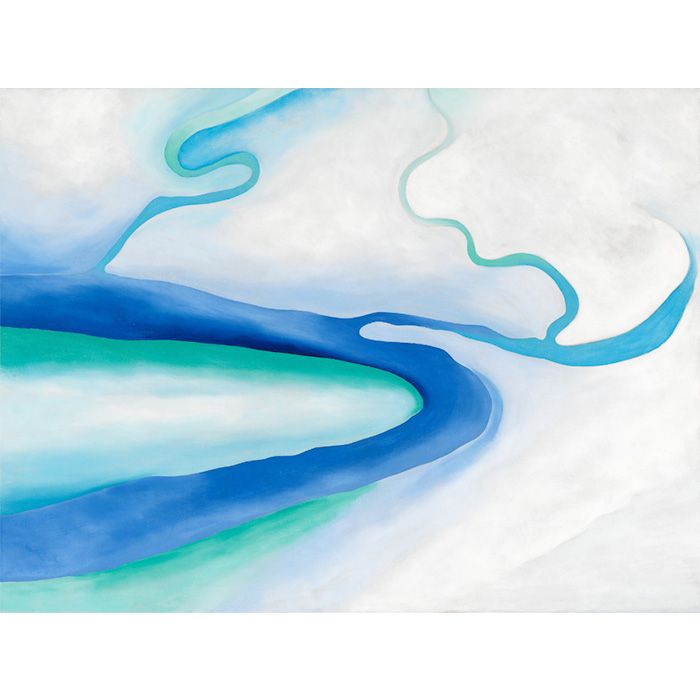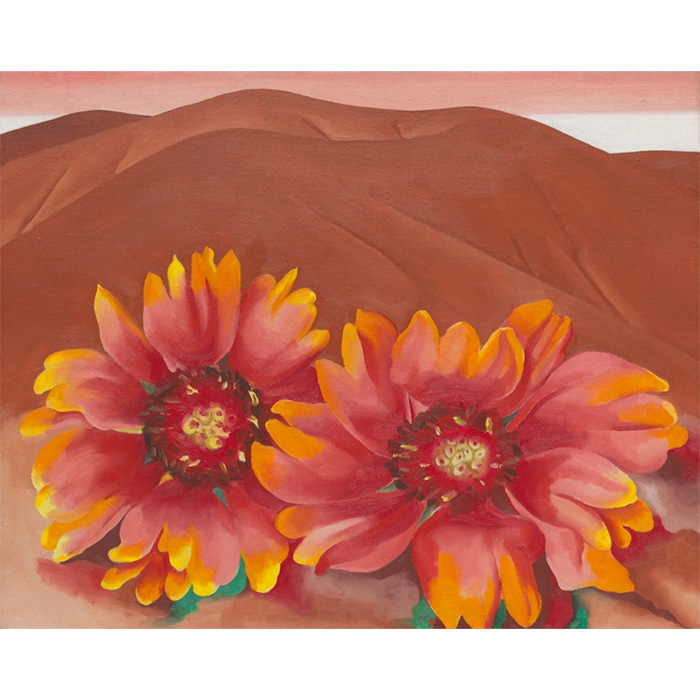Who is Georgia O’Keeffe? Did she only paint flowers? Why do people think her flower paintings are suggestive? Join Heather James into the life and legacy of O’Keeffe. Get a closer look into her impact on art, culture, and American identity while getting answers to some of the biggest questions people ask about the artist.
“Men put me down as the best woman painter… I think I’m one of the best painters.” – Georgia O’Keeffe



Who is O’Keeffe?
- Georgia O’Keeffe was an American painter born in 1887.
- She received critical and public acclaim through her paintings of flowers and of the American Southwest, which transformed Modern art.
- O’Keeffe’s style combined both abstraction and representation.
- O’Keeffe has become synonymous with New Mexico, which provided both a sanctuary and inspiration for the artist.
- The artist Arthur Wesley Dow influenced O’Keeffe by exposing her to non-Western art and to encourage her to move away from realism and “fill a space in a beautiful way.”
- O’Keeffe’s auction record was set when Jimson Weed/White Flower No. 1 sold for over $44 million USD; it is also the most expensive painting by a woman artist sold at auction.
“[Georgia O’Keeffe] was my first and greatest benefactor; it was because of her that I was able to go to the USA and begin my artistic career in earnest…Georgia O’Keeffe is among the top artists in history, and her paintings attained the very highest level.” – Yayoi Kusama
How Did O’Keeffe Transform Painting?
- O’Keeffe’s highly abstracted early works in pastel and watercolor are often cited as worthy antecedents of later manifestations of American abstraction.
- From photographers Alfred Stieglitz and Paul Strand, she learned how to appropriate strategies such as cropping, framing, dramatic perspectives, and magnification of scale.
- She masterfully applied these techniques to her floral paintings, transforming the mundane into the sublime.
- O’Keeffe’s ability to capture the elusive boundary between representation and abstraction is at the core of her singular vision within the annals of Modernism.
- In addition to her manipulation of scale, O’Keeffe engaged in fragmentation, precise lines, and blurred edges, with bold colors handled with respect for careful modeling.
- O’Keeffe’s works emphasize the simple elegance of floral design by reducing extraneous details.
“It is only by selection, by elimination, by emphasis that we get to the real meaning of things.” – Georgia O’Keeffe
What is Modernism?
- Modernism is a broad-based cultural, philosophical, and artistic movement arising from the late 19th and early 20th centuries evincing a deliberate break from traditional style of art and expression.
- The movement emphasized new forms of expression, abstraction, and experimentation in techniques and materials.
- Modernism challenged and reordered the rules of art, pushing for a more subjective interpretation of reality.
- O’Keeffe’s innovative charcoal abstractions executed in 1916 brought her to the attention of photographer and avant-garde gallerist Alfred Stieglitz who found them to be the epitome of Modernism at a pivotal time.
- Modernism in America arrived via artists steeped in late nineteenth-century romantic, symbolist, and transcendental aesthetics who embraced elements of abstraction paved by European modernist trends.
- In addition to Georgia O’Keeffe, the important early American Modernists included Arthur Dove, John Marin, and Marsden Hartley.
“When I got to New Mexico that was mine. As soon as I saw it that was my country… the sky is different, the wind is different.” – Georgia O’Keeffe
What was O’Keeffe’s relationship with New Mexico?
- A 1929 visit to Taos, New Mexico changed the trajectory of O’Keeffe’s career; she summered each year in New Mexico before moving there permanently in 1949.
- The dramatic landscape and the sunlight influenced O’Keeffe to play with color, scale, and abstraction in a way that embodied both wonder and timelessness.
- By painting the sun-bleached bones and the geometric and colorful desert, O’Keeffe became associated with the “Land of Enchantment”.
- Her landscapes and still lifes of New Mexico would also go on to symbolize Modern art and of the America while also being a kind of self-portrait of the artist.
- Did you know New Mexico has been associated with artistic communities? Artists such as Agnes Martin have made their home in the American state while others, including Marsden Hartley and O’Keeffe’s friend Ansel Adams, travelled frequently there and produced important bodies of work.
“All the earth colors of the painter’s palette are out there in the many miles of bad lands. The light Naples yellow through the ochres – orange and red and purple earth – even the soft earth greens.” – Georgia O’Keeffe
Why did O’Keeffe Paint Flowers?
- Flowers allowed O’Keeffe to examine the interplay between shape and color and the tension between abstraction and representation.
- Modernist photography influenced the close cropping and unusual scale of the flowers in O’Keeffe’s paintings.
- By enlarging and abstracting flowers (and sometimes placing them within a desert environment), O’Keeffe dares the viewer to take time to look at them, to be surprised, and to ask questions about ephemerality and permanence.
- O’Keeffe never specifically equated her flower paintings with more provocative connotations, a misconception in large part due to her husband Alfred Stieglitz who encouraged this interpretation through early photographs of O’Keeffe; nevertheless, other women artists have embraced both the feminine and provocative symbolism of O’Keeffe’s flowers.
- O’Keeffe did not just paint flowers – she also painted cottonwood trees, Lake George, the hills of Abiquiu, seashells and bones, and in her early career, pure abstraction.
“Color is one of the great things in the world that makes life worth living to me and as I have come to think of painting it is my efforts to create an equivalent with paint color for the world, life as I see it.” – Georgia O’Keeffe
Why is O’Keeffe Important?
- Innovative Approach to Art: She crafted a new visual language not entirely figurative nor entirely abstract, indebted as much to an artist’s internal vision as to the external realities of the environment.
- Modernism and Landscapes: Her representations of flowers, trees, bones, and landscapes are not only visually striking, but also invite viewers to look more closely at the world around them.
- Broke barriers of perception: O’Keeffe continues to influence contemporary artists and is cited as a foundational figure in American art.
- Continued Influence: Her approach to art and life continues to inspire books, films, and scholarly research, attesting to her lasting impact on art and culture.
“Objective painting is not good painting unless it is good in the abstract sense. A hill or tree cannot make a good painting just because it is a hill or a tree. It is lines and colors put together so that they say something. For me that is the very basis of painting.” – Georgia O’Keeffe
Reference Videos
Available Works by Georgia O’Keeffe
If you’d like to learn more about Heather James Art Advisory and our holistic approach to collecting and managing art, visit us at https://www.heatherjames.com/advisory/ or email us at [email protected].




























